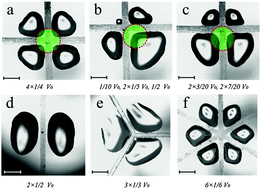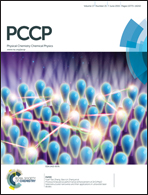Selectively splitting a droplet using superhydrophobic stripes on hydrophilic surfaces†
Abstract
Superhydrophobic patterns were fabricated on hydrophilic surfaces by selective painting. The impinging process of water droplets on these hybrid surfaces was investigated. The droplet can be split by impinging on the hydrophilic surface with a single stripe at a high velocity. The time to split the droplet is independent of the impact velocity and it is smaller than the contact time of a droplet impinging on the fully superhydrophobic surface. The volume ratios of the split mini-droplets could be precisely controlled by adjusting the landing position of the original droplet. The droplet could be split uniformly into more mini-marbles by increasing the stripe numbers.


 Please wait while we load your content...
Please wait while we load your content...